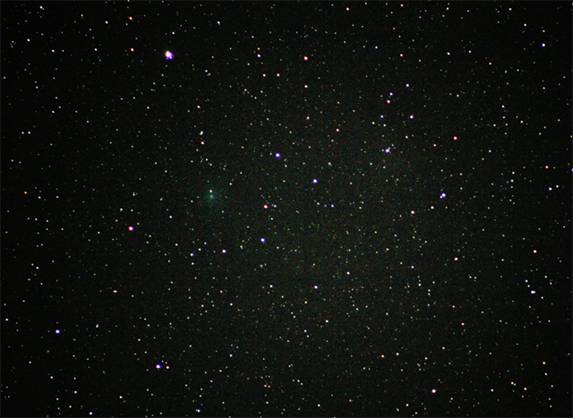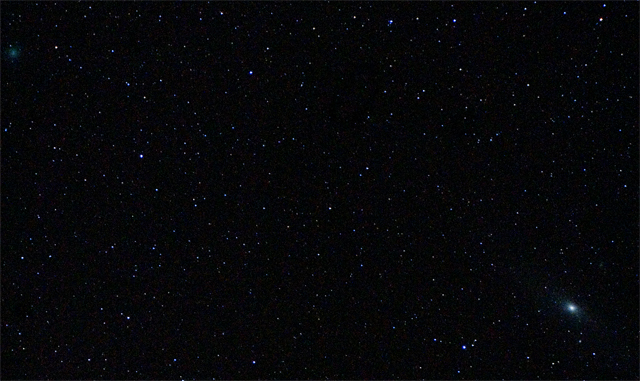Perihelion was late January 2008, and as of February was visible telescopically to Southern Hemisphere observers in the constellation Eridanus.
On December 30, 2007 it was in close conjunction with spiral galaxy M33.
On January 1, 2008 it passed Earth at a distance of 0.25282 AU (37,821,000 km; 23,501,000 mi).
Comet 8P/Tuttle is responsible for the Ursid meteor shower in late December.
Predictions that the 2007 Ursid meteor shower could be expected to be stronger than usual due to the return of the comet,
did not appear to materialize, as counts were in the range of normal distribution.
Radar observations of Comet Tuttle in January 2008 by the Arecibo Observatory show it to be a contact binary.
The comet nucleus is estimated at about 4.5 km in diameter, using the equivalent diameter of a sphere having a volume equal to the sum of a 3 km and 4 km sphere.
I haven't had much in the way of clear sky since Comet Tuttle became accessible to my modest instrumentation.
Comet Tuttle, 2008
I haven't had much in the way of clear sky since Comet Tuttle became accessible to my modest instrumentation. On the night of December 23rd, 2007 I got about 30 minutes of (somewhat) clear sky
and shot the images below. First, is simply a straight on prime focus image thru the Orion 120mm F/5.0. with the Canon 40D.

The next clear night found me shooting through sucker holes.
It was December 26th, 2007 and I arranged the camera to get M31 in the same field. See Tuttle, upper left and M31 lower right.
I used the 75-300 kit lens that came with my Canon 30D for this image.
That done, I moved the camera to get Comet Holmes in the image. While doing so, it clouded up and hasn't been clear since.
I haven't had much in the way of clear sky since Comet Tuttle became accessible to my modest instrumentation. On the night of December 23rd, 2007 I got about 30 minutes of (somewhat) clear sky
and shot the images below. First, is simply a straight on prime focus image thru the Orion 120mm F/5.0. with the Canon 40D.

The next clear night found me shooting through sucker holes.
It was December 26th, 2007 and I arranged the camera to get M31 in the same field. See Tuttle, upper left and M31 lower right.
I used the 75-300 kit lens that came with my Canon 30D for this image.

That done, I moved the camera to get Comet Holmes in the image. While doing so, it clouded up and hasn't been clear since.